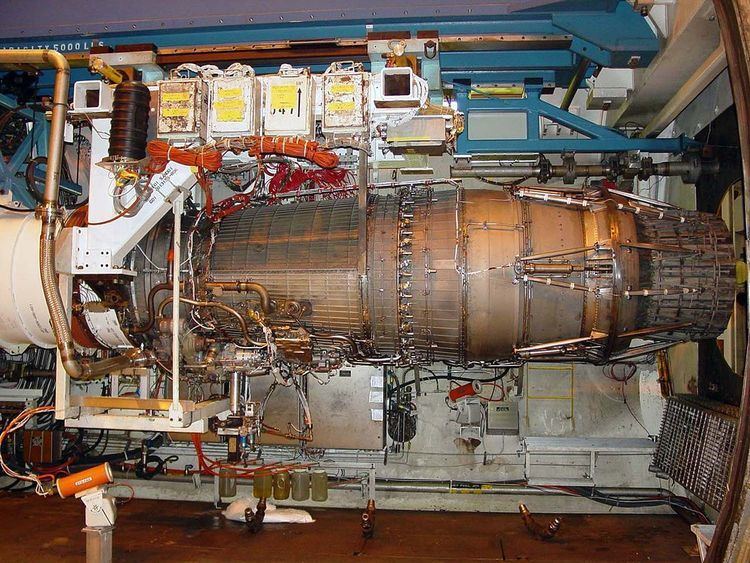 | ||
The General Electric F101 is an afterburning turbofan jet engine. It powers the Rockwell B-1 Lancer strategic bomber fleet of the USAF. In full afterburner it produces a thrust of more than 30,000 pounds-force (130 kN). The F101 was GE's first turbofan with an afterburner.
Contents
Development
The F101 was developed specifically for the Advanced Manned Strategic Aircraft, which became the B-1A. The F101 powered the four development aircraft from 1970 to 1981. The B-1A was officially cancelled in 1977. However the flight test program continued. General Electric was awarded a contract to further develop the F101-102 engine variant. This turbofan eventually powered the B-1B from 1984, entering service in 1986. The B-1's four F101 engines helped the aircraft win 61 world records for speed, payload and range.
The GE F110 fighter engine is a derivative of the F101, designed using data from the F101-powered variant of the F-16 Fighting Falcon tested in the early 1980s. The F101 also became the basis for the highly successful CFM56 series of civil turbofans.
Applications
Specifications (F101-GE-102)
Data from
